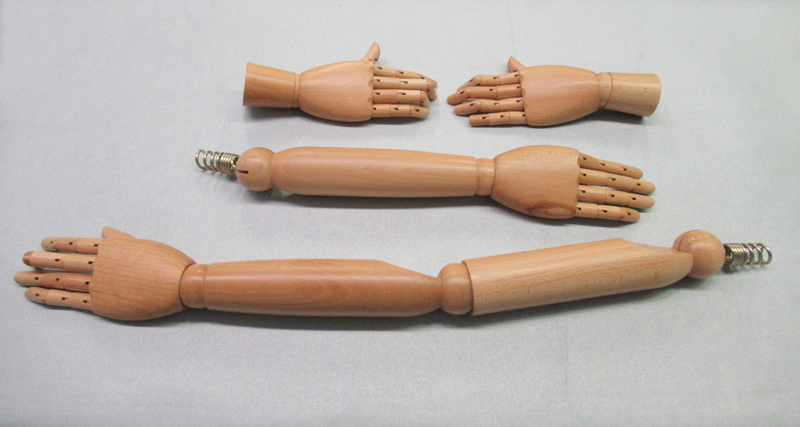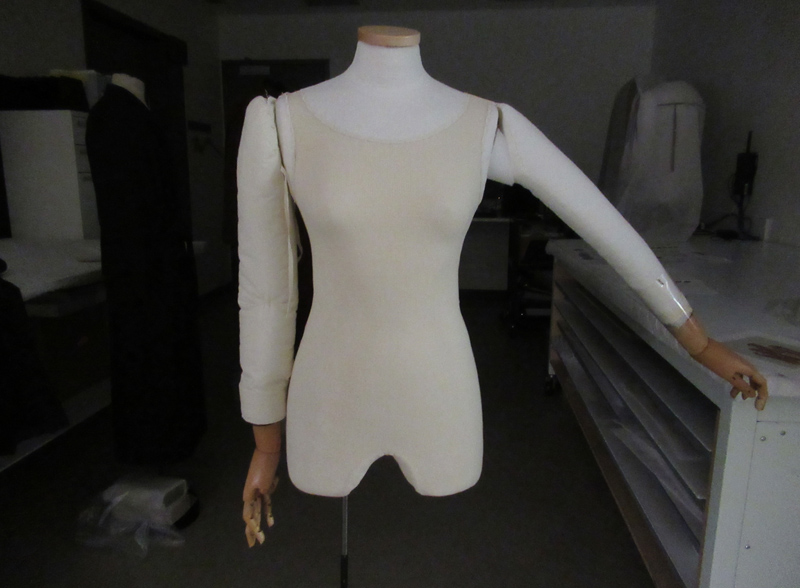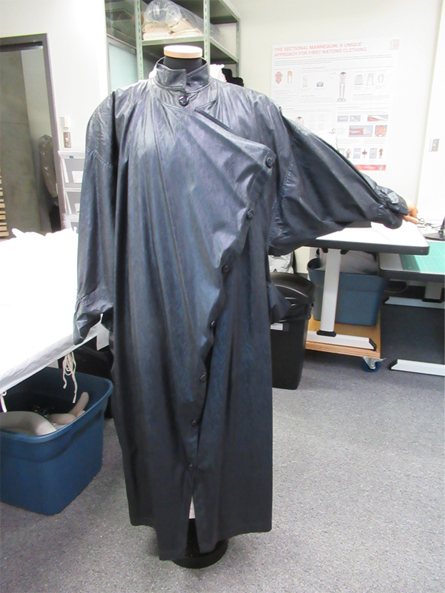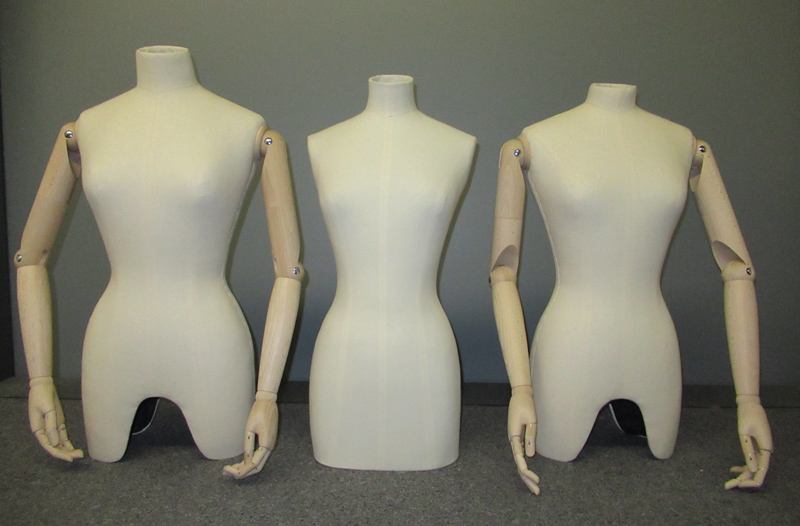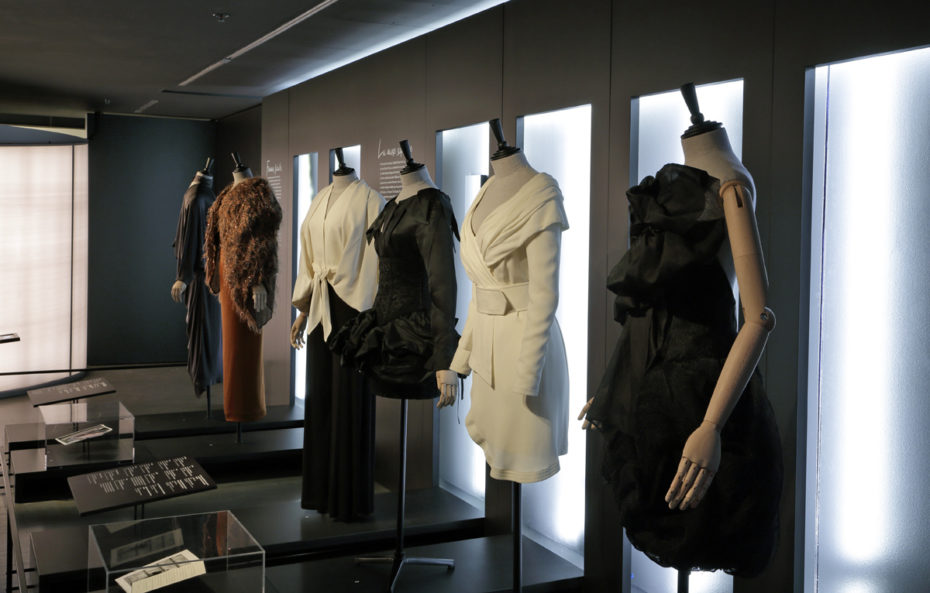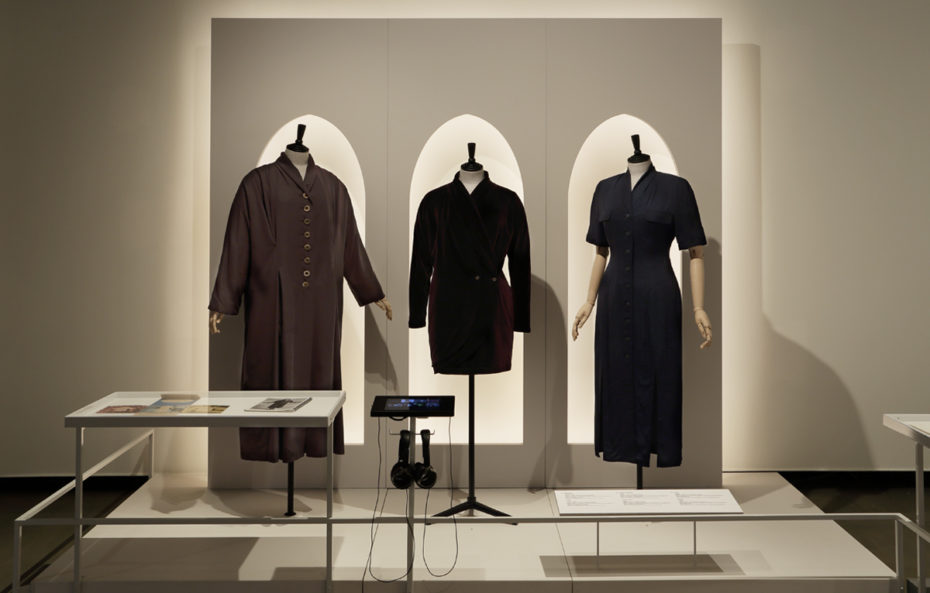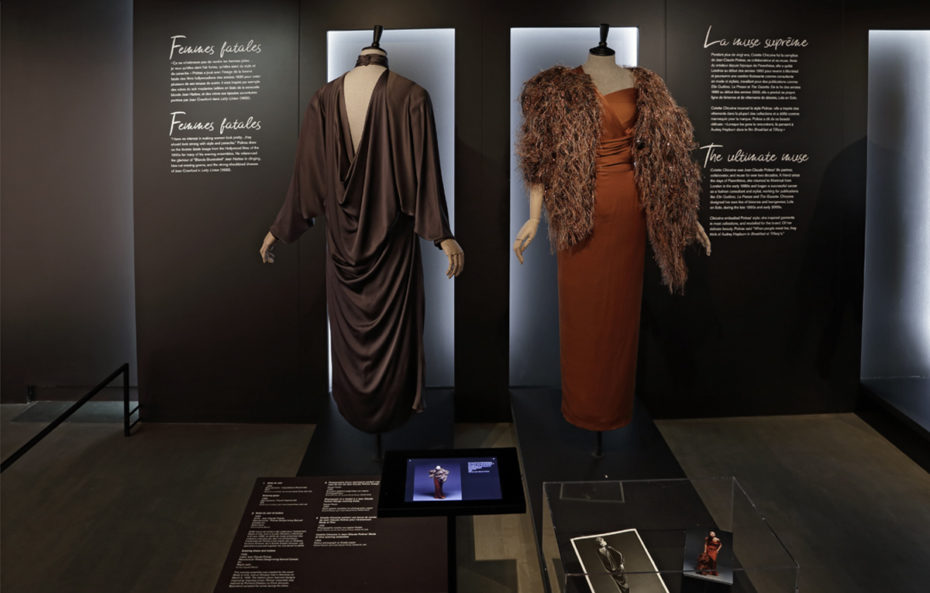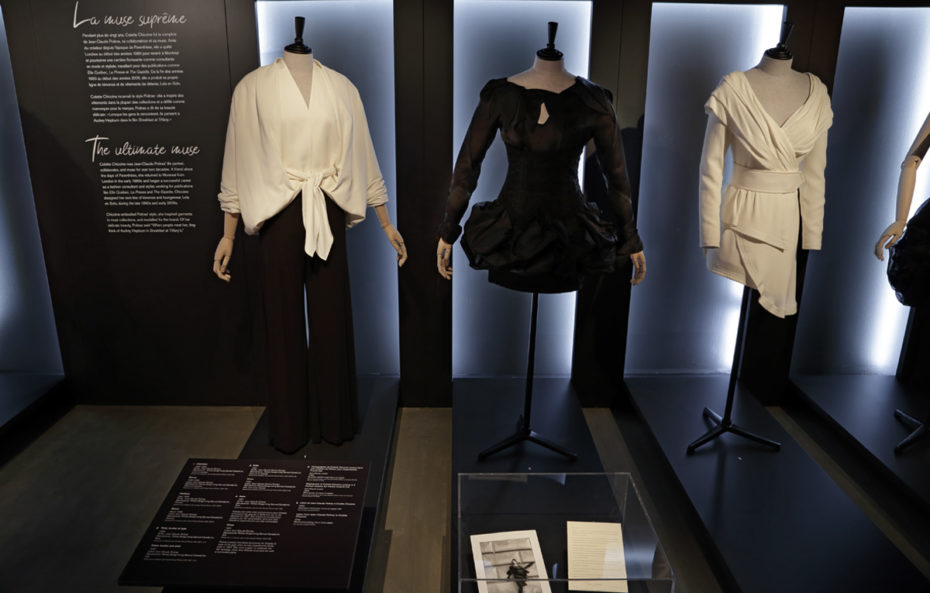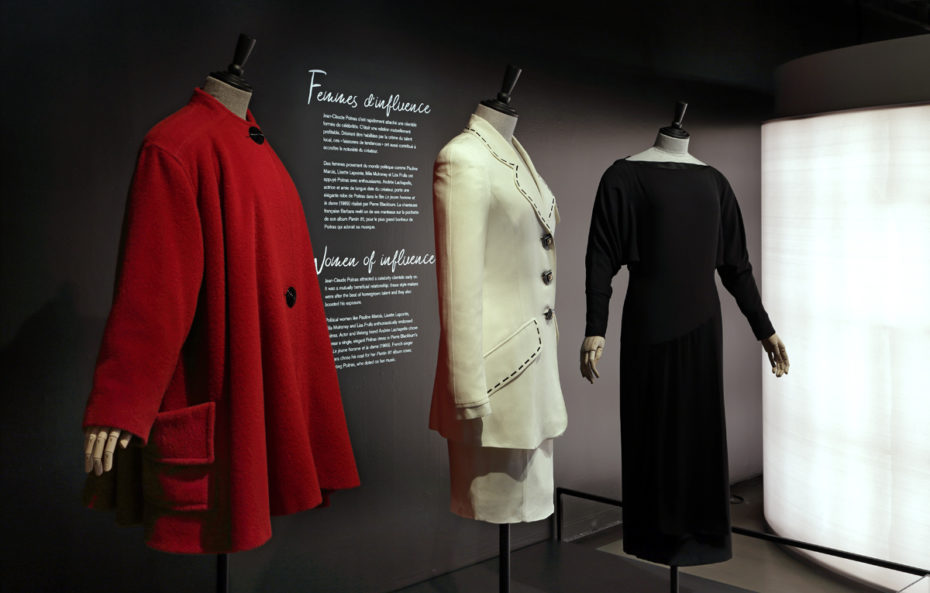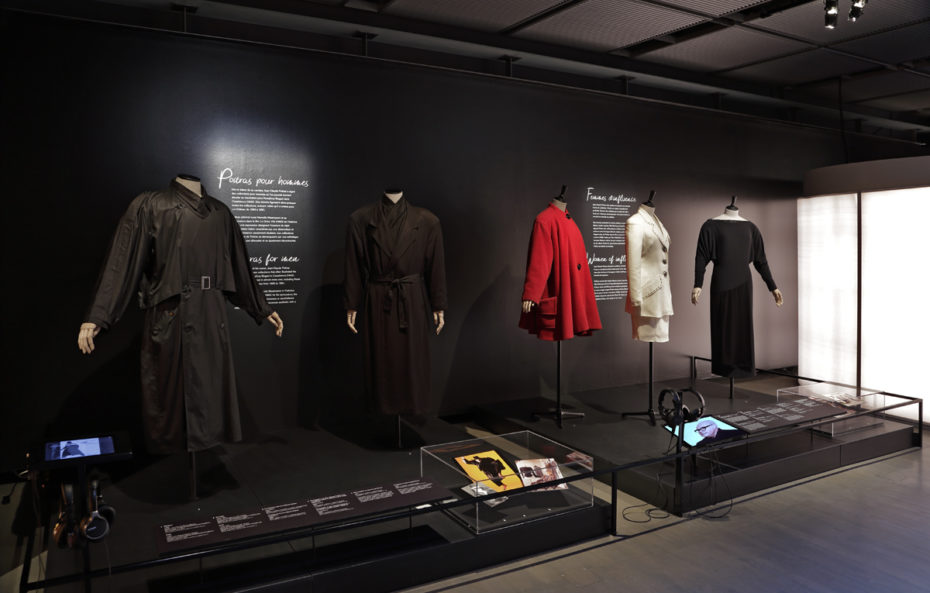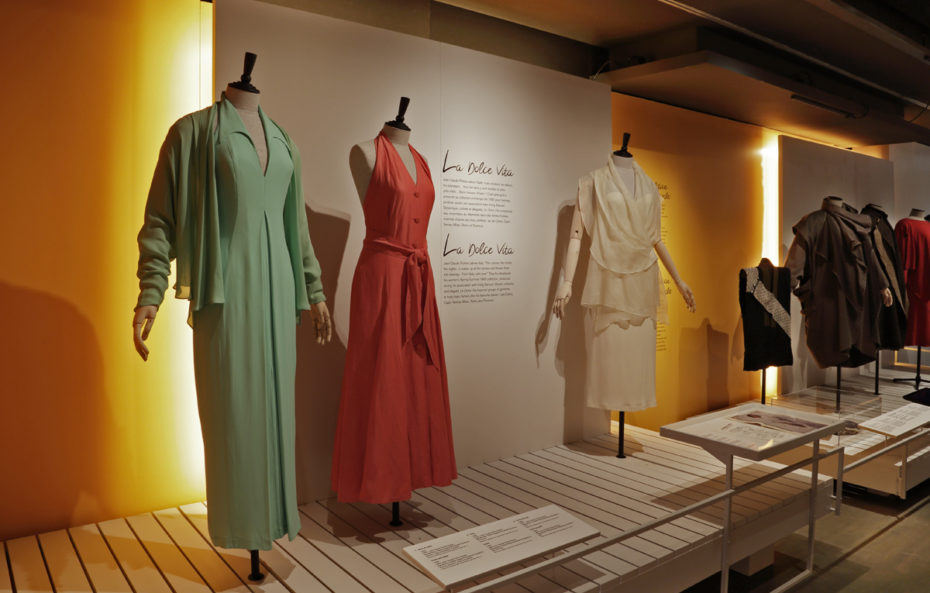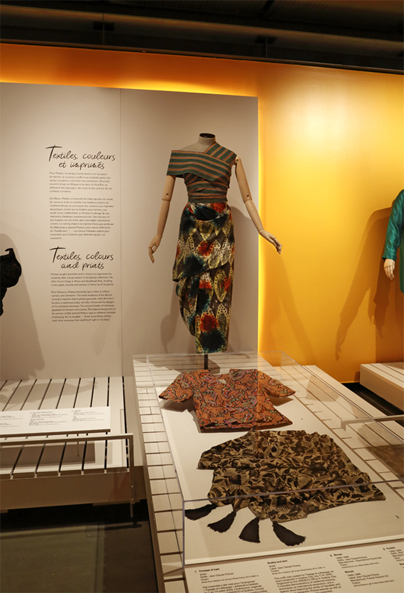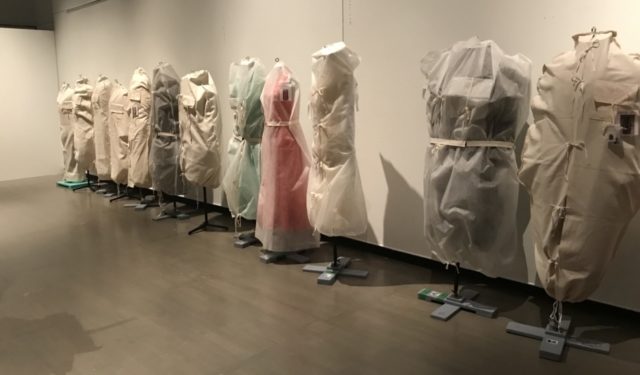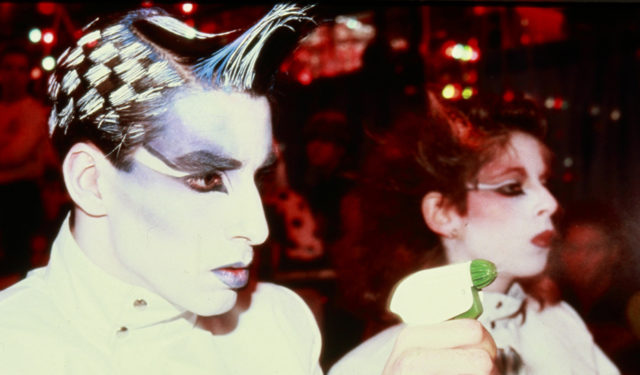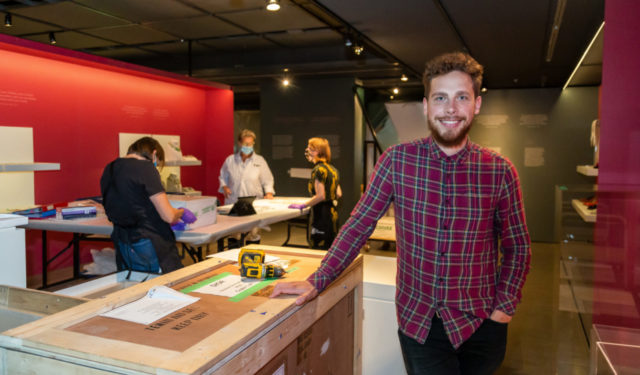Mannequins that Measure Up!
To properly display designer clothing, one must have the right kind of mannequin.
April 11, 2020
A year before the opening of Jean-Claude Poitras: Fashion and Inspiration, an exhibition organized jointly by the McCord Museum and the Musée de la civilisation, it occurred to me that using mannequins with articulated wooden arms could add a touch of elegance to the presentation style while helping visitors gain a better understanding of the designer’s creations. I had no idea of the challenges this decision would present to the mounting team, from selecting the type of mannequin to crating it for travel!
In order to conduct a few tests, we bought a pair of articulated wooden arms and a pair of articulated hands. However, it was impossible to attach the arms to our mannequins the way we wanted to, which inspired us to find other solutions.
One of the arms was taken apart and the forearm inserted into a polyester-filled arm covered with cotton fabric. We also attached one of the hands to an arm we made out of rigid foam and then covered the entire assembly with fabric. These two types of arms could be altered to suit the length of the sleeves on the garment, a feature we thought might be useful one day!
We tested the arms using one of Jean-Claude Poitras’ garments from the McCord Museum’s collection. The experience was conclusive: the use of mannequins with articulated arms that could be arranged in any position helped accentuate the style and the cut of clothing created by Mr. Poitras, especially the very ample pieces from the 1980s.
The only mannequins available in Montreal were standard models that were far too big for many of the garments selected for the exhibition, so we decided to purchase our mannequins from UK-based Proportion London. This manufacturer, which has developed several of its models in collaboration with the Victoria & Albert Museum conservation team, offers several styles in a variety of sizes to suit museum collections of historic and contemporary dress. Our new mannequins with articulated wooden arms were added to our inventory of bust forms, which we could then equip with custom-made arms to support the sleeves of clothing.
Each mannequin was paired with an individual garment after we evaluated the style of the clothing and the best positioning of the arms. This allowed us to fully display each garment in all its elegance. As you can see in the photo, the mannequins were given a uniform look by adding caps, using tubular or tripod style bases, and covering the visible parts of the forms with a grey linen fabric. What you don’t see, however, is how the use of articulated wooden arms required us to modify our mounting and crating techniques.
What you don’t see, however, is how the use of articulated wooden arms required us to modify our mounting and crating techniques. To learn more about our work, please look for my next article.
We welcomed with open arms the challenge of creating mannequins that measure up!


